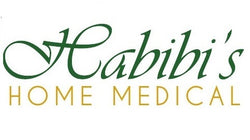Dealing with an overactive bladder (OAB) can be a frustrating and challenging experience. The constant urge to urinate and the potential for leakage can significantly impact a person's quality of life. However, with the right approach, treatment, and lifestyle adjustments, it is possible to regain control and live a fulfilling life. In this blog post, we will explore various strategies for treating and living with overactive bladder, empowering individuals to take charge of their condition.
Understanding Overactive Bladder:
Overactive bladder is a medical condition characterized by a sudden and frequent urge to urinate, even when the bladder may not be full. It can also involve urinary incontinence, which is the unintentional leakage of urine. OAB can be caused by various factors, such as weak pelvic muscles, neurological conditions, hormonal changes, or even certain medications. It is essential to consult a healthcare professional to determine the underlying cause and develop an appropriate treatment plan.
Medical Treatments for Overactive Bladder:
1. Medications: Doctors may prescribe anticholinergic or antispasmodic drugs to calm an overactive bladder, reducing the frequency and urgency of urination.
2. Botox Injections: In some cases, Botox injections can be administered directly into the bladder muscles to relax them and decrease urgency and frequency.
3. Nerve Stimulation: Electrical nerve stimulation can help regulate bladder activity by sending mild electrical impulses to the nerves controlling the bladder, resulting in improved control.
4. Surgical Options: For severe cases that do not respond to other treatments, surgical interventions such as bladder augmentation or urinary diversion may be considered.
Lifestyle Adjustments:
1. Bladder Training: This involves gradually increasing the time between bathroom visits, training the bladder to hold urine for longer periods. Over time, this can help reduce urgency and frequency.
2. Fluid Management: Monitoring and adjusting fluid intake, especially before bed or activities that can trigger symptoms, can help manage OAB. Avoiding irritants like caffeine, alcohol, and acidic foods can also be beneficial.
3. Pelvic Floor Exercises: Strengthening the pelvic floor muscles through exercises like Kegels can provide better bladder control and reduce OAB symptoms.
4. Scheduled Bathroom Breaks: Establishing a regular bathroom schedule, even when there is no urge to urinate, can help regulate bladder activity and prevent accidents.
Coping Strategies:
1. Use Protective Products: Wearing absorbent pads or adult diapers can provide a sense of security and confidence while managing OAB.
2. Accessible Restrooms: Familiarize yourself with locations of nearby restrooms in places you frequently visit to alleviate anxiety and ensure easy access when needed.
3. Open Communication: Share your condition with loved ones, friends, and coworkers to help them understand and provide support during challenging times.
4. Stress Management: Practice stress-reducing techniques such as deep breathing, meditation, or engaging in hobbies to help alleviate OAB symptoms triggered by stress.
Living with an overactive bladder may present its challenges, but it doesn't have to define your life. By combining medical treatments, lifestyle adjustments, and coping strategies, individuals with OAB can effectively manage their symptoms and enjoy an active and fulfilling life. Remember to consult with healthcare professionals, maintain an open dialogue, and stay proactive in your approach. With time, patience, and the right strategies, regaining control and living well with OAB is achievable.






